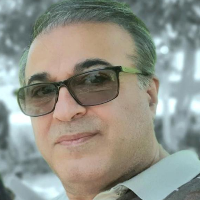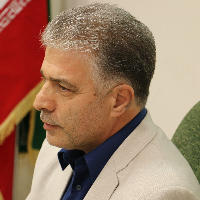Intrathecal Autologous Stem Cell Therapy in Neurological Diseases
Article Type:
Research/Original Article (دارای رتبه معتبر)
Abstract:
Background
Cellular transplantation is a promising treatment strategy for neurological diseases.
Objective
To report the results of intrathecal hematopoietic stem cell therapy in different neurological diseases in the past 6 years in a single center.
Methods
From October 2011 to September 2018, 220 patients with various neurological diseases were transplanted intrathecally by their bone marrow stem cells. To have a longer follow up, we only reported the first 80 patients, transplanted up to July 2015—10 patients had spinal cord injuries and paralysis, 12 had advanced Parkinson’s disease, 28 had cerebral palsy, 7 had hypoxic brain damage, 2 had autism, 4 had multiple sclerosis, 5 had progressive cerebellar atrophy, and 12 had other neurological diseases. The patients were admitted to the Bone Marrow Transplant Unit. On the first day, 50–200 (median 100) mL bone marrow was aspirated from the patients’ posterior iliac crests, mixed with 120 mL culture media (RPMI), and 12 mL heparin. The samples were then transferred to immunology lab in cold box. Mononuclear cells (MNCs) were separated by a Ficoll-Hypaque gradient, washed, and suspended in ringers. Cell viability was assessed with trypan blue viability test. Transplantation was performed 3–4 hours after bone marrow collection. 5–10 mL of the cerebrospinal fluids were aspirated and about 20 mL MNCs (containing stem cells) in ringers were injected intrathecally (IT). The patients were laid down on their back for 4–5 hours. The median number of MNCs was 4×107 (range 1–450×107). The median viability of the cells was 90% (range 60%–98%). The patients received intravenous ceftriaxone every 12 hours and were discharged from the hospital few days after autologous stem cell therapy.
Results
We noted clinical improvements in 9 of 12 patients with Parkinson’s disease, 20 of 28 patients with cerebral palsy, 6 of 7 patients with hypoxic brain damage, 2 of 4 patients with multiple sclerosis, and 4 of 5 patients with cerebellar atrophy. The improvements were noted after 2–4 weeks of cell therapy. There were no improvements in patients with spinal cord injury and complete paralysis and those with autism. There were variable improvements in other patients treated.
Conclusion
Most patients with advanced Parkinson’s disease, cerebral palsy, hypoxic brain damage, progressive cerebellar atrophy, and kernicterus neuropathy reported clinical effects of this safe intervention resulting in better functioning and an increased quality of life.Keywords:
Language:
English
Published:
International Journal of Organ Transplantation Medicine, Volume:9 Issue: 4, Autumn 2018
Pages:
157 to 167
magiran.com/p1906811
دانلود و مطالعه متن این مقاله با یکی از روشهای زیر امکان پذیر است:
اشتراک شخصی
با عضویت و پرداخت آنلاین حق اشتراک یکساله به مبلغ 1,390,000ريال میتوانید 70 عنوان مطلب دانلود کنید!
اشتراک سازمانی
به کتابخانه دانشگاه یا محل کار خود پیشنهاد کنید تا اشتراک سازمانی این پایگاه را برای دسترسی نامحدود همه کاربران به متن مطالب تهیه نمایند!
توجه!
- حق عضویت دریافتی صرف حمایت از نشریات عضو و نگهداری، تکمیل و توسعه مگیران میشود.
- پرداخت حق اشتراک و دانلود مقالات اجازه بازنشر آن در سایر رسانههای چاپی و دیجیتال را به کاربر نمیدهد.
دسترسی سراسری کاربران دانشگاه پیام نور!
اعضای هیئت علمی و دانشجویان دانشگاه پیام نور در سراسر کشور، در صورت ثبت نام با ایمیل دانشگاهی، تا پایان فروردین ماه 1403 به مقالات سایت دسترسی خواهند داشت!
In order to view content subscription is required
Personal subscription
Subscribe magiran.com for 70 € euros via PayPal and download 70 articles during a year.
Organization subscription
Please contact us to subscribe your university or library for unlimited access!



